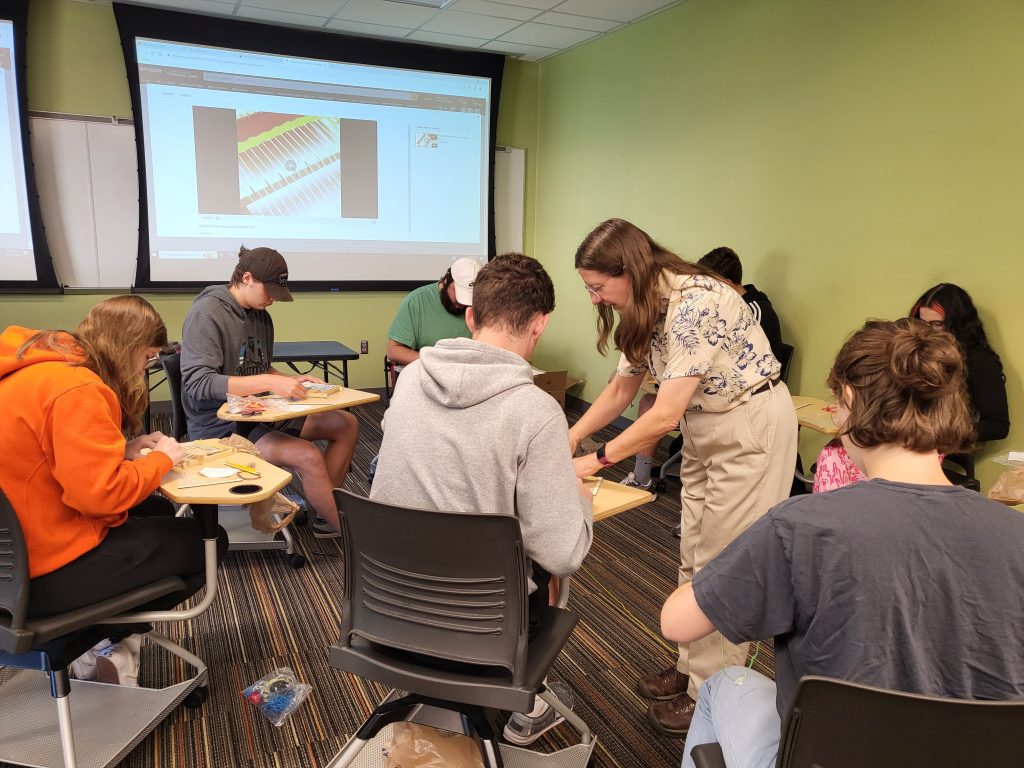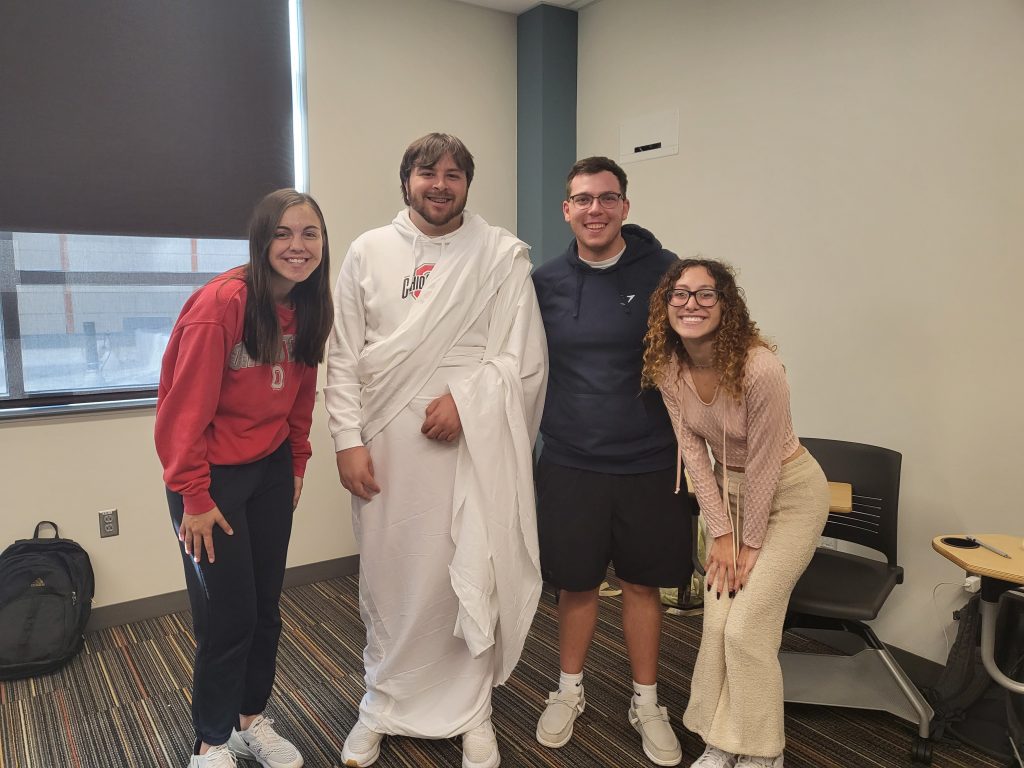by Dr. Casey Stark
Teaching a college-level history survey course is both challenging and rewarding. I think of designing one as a science and delivering it as a form of art. The faculty in the Department of History who teach these American and World history surveys use a variety of formats and pedagogical strategies. There is no one “best” way of communicating historical content or helping students develop the skills of a historian – so each instructor does so differently based on multitude of factors. This post shares how I have redesigned HIST 1510: World Civilizations into a history “lab” course.
I joined the faculty of BGSU in Fall 2018 and have taught World Civilizations almost every semester since. At first, I do so as a large lecture course of 82 students. This format can be effective, but I wanted more direct engagement with the students and to incorporate more active learning into the classroom. I asked for, and received, permission to experiment, and started lowering the number of students and moved to active learning classrooms. Then COVID-19 happened. It changed how I needed to deliver the course for a few semesters, but it also provided inspiration for a new course design.
Many parts had to come together for this redesign to be possible. Here are just some of the considerations ranging from the human to the practical and pedagogical:
- I knew that I wanted smaller class sizes and the ability to get to know each of my students. I also did not want to lecture at them extensively but rather engage with them in discussion and through active learning. Students likewise said they wanted less lecture (either in person or online as with a flipped classroom) and more active learning.
- Approximately 96% of the students enrolled in this course are non-history majors. There is a considerable number of education students for whom it is a requirement and not only need the content, but as future K-12 teachers are also highly likely to engage with active learning in their future classrooms and can benefit from having this demonstrated in their college courses. However, most students take the course for BGP (Bowling Green Perspectives, i.e. general education) credits and accordingly are often not invested in the course or interested in its content.
- The course is a comparative study of all world civilizations from the beginning of history through 1500 CE. It is impossible to cover everything. It satisfies BGP requirements for Social and Behavioral Sciences and International Perspective. Combined, these have nine learning objectives to build into the course. Additionally, the Department of History has seven specific learning outcomes for students that largely focus on developing historical skills ranging from critical thinking to the analysis of sources to recognizing and developing connections between historical issues and life outside the classroom.
Thus, the course redesign had to include what was required as far as content and learning objectives, and it had to meet the practical concerns of enrollment and scheduling. Beyond this, I prioritized student engagement and the development of skills that could transfer to their other courses and professional life after BGSU.

I debuted the new course format in Fall 2021 as the History 1510 “lab”. It factored in the above considerations (and others) and used principles of backward design to combine the “science” with the “art” of the delivery format and design of each lab meeting. Each semester I have made adjustments to improve various aspects of the course but at present this is what my version of History 1510 looks like:
- Students enroll for a “blended” course (approximately half online and half in person). They register for a specific 75-minute class that meets once per week and has 25 students (for administrative purposes there is essentially one section of 50 students that is divided into two meeting groups).
- When students come to class it is for a “lab”. I decided to call these meetings labs to use familiar terminology to what students would have in a science lab course. Each History 1510 lab has a specific theme that includes cross-cultural comparisons on a specific topic such as Fibers and Textiles, Children and Education, or Funerary Customs. Students have a pre-lab activity that prepares them to engage with that lab’s topic and a post-lab activity that builds on information covered in the lab and ask them to reflect on what they learned. Each lab also embeds one or more historical skills into its design. The 75 minutes are divided into several blocks to facilitate student engagement. A typical meeting starts with a discussion of the pre-lab content, a mini lecture with historical content, a small group activity, and a large group discussion to compare results. Starting in Fall 2023, I introduced a group research project and so one lab is entirely devoted to doing historical research and students use the end of each lab to touch base with their group.
- Outside the classroom is where students do most of their work on the group research project and acquire much of the historical content. I use an eBook that approaches this course as a comparison of civilizations in a thematic way and moves chronologically through history. The additional resources include short, embedded videos, end-of-chapter assessments that are adaptive and gamified, and map and primary source exercises. It is all highly visual and interactive.
Although I independently came up with this idea for a history lab, the concept is gaining traction at other institutions. Typically, the “History Lab” is a dedicated space to work on history projects and not directly applied to a classroom setting. However, “labs” are entering the classroom and online environments. The History Lab serves as an archive of government records, while the goal of the AHR History Lab (American Historical Review) is to rethink the practice of history. This initiative is a publication of the American Historical Association (AHA), which is also currently focused on enhancing the teaching of introductory courses.

Students taking a college-level history survey benefit from their instructor’s creativity and adaptability. When challenges such as short attention spans, easy access to technology, and high enrollments of non-majors are turned into unique opportunities for learning, we can inspire a new generation of history enthusiasts and critical thinkers. We may also pick up some new history majors along the way!
